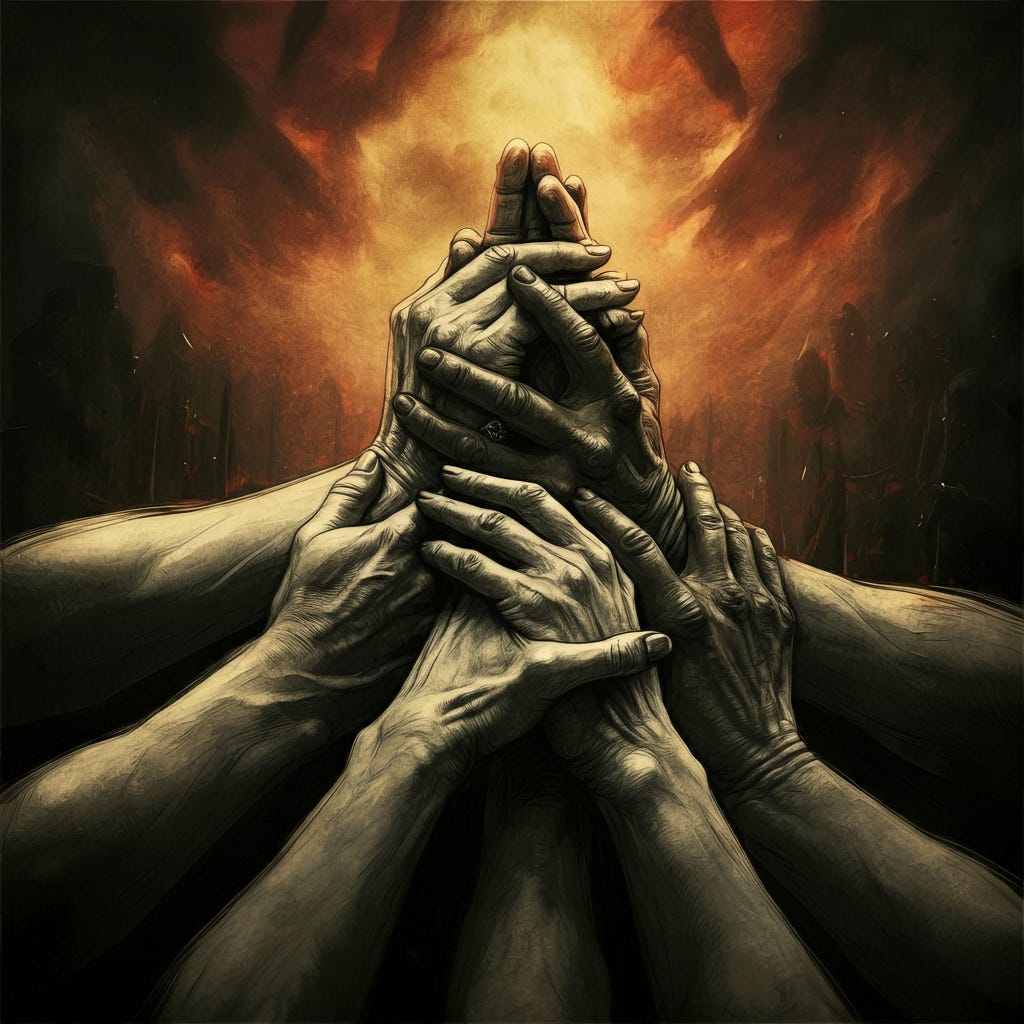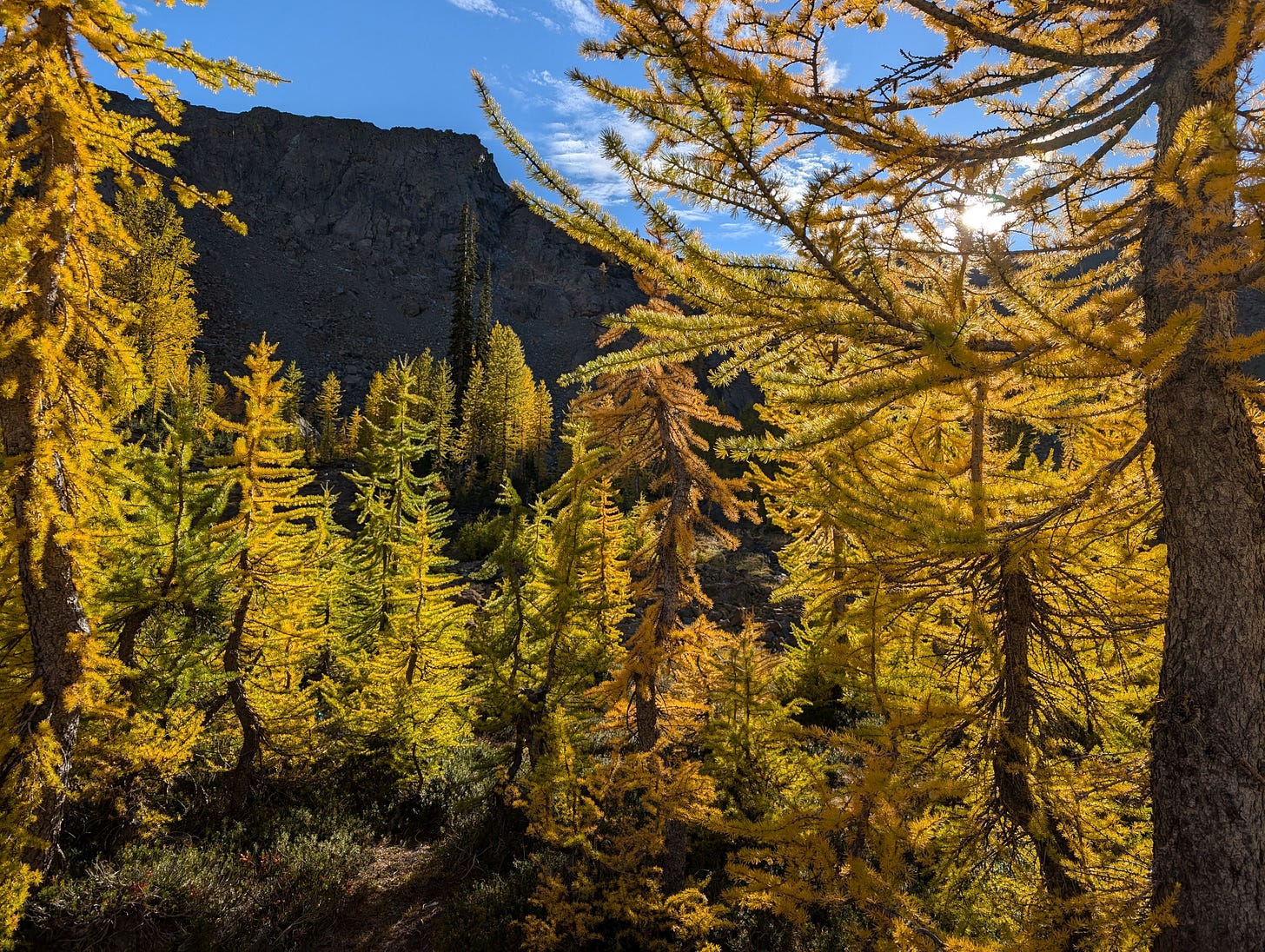I know we’re supposed to live in the present, but these days it’s just so darn scary. There’s so much happening in our world, in our country, in our schools, on our streets. We do what we can, but still so much remains out of our control.
There are mornings I admittedly want to pull the coverlet over my head with an emphatic, “Nope, not today.” But I’ve yet to find much benefit in pretending things don’t exist. So with empathy, outrage, dread, strong coffee and a little courage, I inevitably bear emotional weight from the calamities around us, add it to the burden I’m already carrying, and try to move onward.
Many of us are doing some version of this.
But what am I——or are we——moving toward? And with whom? This last question matters just as much or maybe even more than the former. Amidst our goals and endless to-do lists that structure the minutes of our days, gobble up our months, and end up governing our lives, our busyness can easily leave little time to nurture our relationships.
And we know this imbalance has far-reaching consequences. Mental health issues are on the rise. According to Mental Health America, in the past year, 23.08% of adults in the U.S. (nearly 60 million Americans) have experienced a mental illness. Over 45 million adults, or 17.82% of Americans report having a substance use disorder. Sadly, 20.17% of youth (12-17 years old) have had a major depressive episode. We’re experiencing an epidemic of loneliness like never before. These numbers are staggering, yet it likely comes as no surprise. Who doesn’t know someone in their social circles who is struggling or suffering?
While we might not be able to improve the poor access to behavioral health services or provider shortages, we can create some impact. Simon Sinek, renowned author and speaker on leadership and the importance of human connections, explains how we live in a world saturated with prescriptive messaging about how to be better——sleep better, eat better, be a better leader, a better parent——but there is little discussion about how to be a better friend. I love that he is talking about this. He believes being a good friend is the biohack that can help fix some of our mental health issues.
I couldn’t agree more. Our close friendships are important. In Simon’s words, we need friends who we can “sit in the mud” with. It is in these stronger, deeper emotional connections——where trust creates space for sincerity and vulnerability——where we can heal and move through successes and happiness, and uncertainty and tragedy. Simon explains that trust is actually built by asking for help, rather than by offering help. He tells a story about a friend who told him he’d been struggling. When Simon asked why he hadn’t said anything earlier, his friend confessed that he didn’t want to bother Simon with his troubles. How familiar does this sound? I’ve certainly borne my problems alone countless times so as not burden my friends. What we don’t often hear is a reaction like Simon’s: “You asshole. How dare you be so selfish to deny me the honor of being there for you in your time of need.” He’s right.
Friendships are built on mutual trust and support. We are wired to be social and to maintain social connections. We want to help others. Research shows that when we are able to help others, "happy hormones" like endorphins, serotonin, dopamine, and oxytocin are released. Showing love and care, or lending a helping hand helps give us purpose, feel a greater sense of belonging, and can reduce loneliness and depression.
And not only in our close relationships.
Even in our circles of participation (circle #3, which includes people we have more casual interactions with at work, school, the gym, in our neighborhood, etc.) we can also create an impact. Unexpected human connections often take no time, are gratefully accepted, and long remembered. On those days that it’s a struggle to face the world, I’ve found that a short, unexpected exchange with a cashier at the supermarket can put a smile on my face. Even though nothing has actually changed, I can immediately feel better. And in feeling lighter and happier, I share that with others, brightening someone else’s day a little too. So it goes.
As our technological advances and busy schedules pull us away from connecting with one another, the more important it is for us to intentionally lean in and nurture our friendships. The more we may want to retreat, the more we actually may need to reach out, connect, and ask for help. And whether it be carving out the time for our friends or honing our friendship skills, there is a growing need for us to be better friends. Our well-being——as individuals and as a society——depends on it. ❤️❤️
Here's a beautiful conversation between Simon Sinek and Trevor Noah on friendship. If you haven’t heard of what Simon calls the “eight-minute catch-up,” you can read or watch a short clip to learn more.
Are you making space in your life for the relationships that help nourish and sustain you?
I’d love to hear your thoughts! Until then, I wish you moments of great clarity so that you may see past the daily clutter, quiet the noise, and savor what truly matters to you. Thank you for reading!
October’s little joy
When my friend invited me to her cabin and proposed we do a hike to see the larches, I was excited about a weekend together in the remote lakeside forest, and welcomed the challenge of a strenuous hike. Knowing nothing about larches, I thought it a little odd to hike to a tree. But she was obsessed, and I was happy to take the journey with her.
In Washington, the few weeks between late September and early October are when the larches change color and put on a beautiful fall show with their vibrant golden-yellow needles. As deciduous conifers, they will soon drop all their foliage and remain bare through winter until the first green shoots in early spring.
For many in the Northwest, a larch march is more of a pilgrimage. An annual tradition to take in the burst of color of these unique and beloved trees that grow in high elevations, just under the rugged mountain peaks. Some describe it as finding a pot of gold. For my friend, it was euphoric. She beamed, energized by the stunning fall landscape around her and grateful for this fleeting and magical moment in time. A year ago, this was not a hike she could do.
I enjoyed the larches, the challenging elevation gain, the views of snowcapped Mount Stuart, the steep rocky scramble up to the glacial lake, and the deep conversation along the way. I brimmed with confelicity, delighting in the happiness my friend cultivated from larching. Joy is contagious.
Response from September’s Newsletter Question
Do you recall a time when life didn’t go as you planned, and quite frankly, you are happy it didn’t?
As for unplanned life events. Well, that has been my life. From the moment I was born unplanned events have shaped my life. I have learned to dance in the rain. --Kay
ICYMI
Newsletters: September: How’s the book coming along? August: When the lemons come ...
Joy snacking: sunset, dahlias, concrete joy, espresso, squirrels
Scrapbook: The Pedicab, Our brown van
Other posts: "I quietly hoard memoirs”











Confelicity is a new word for me and a concept that I have lived with for many years without explicitly recognising it